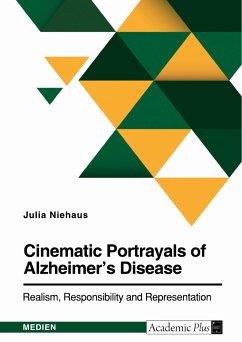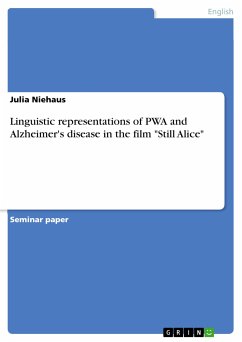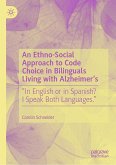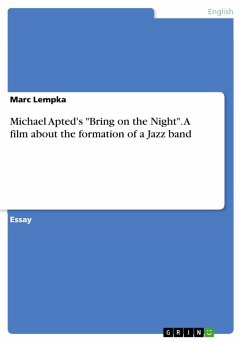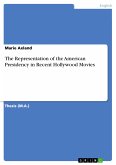Master's Thesis from the year 2023 in the subject English Language and Literature Studies - Linguistics, grade: 1,0, University of Duisburg-Essen (Anglophone Studies), language: English, abstract: The depiction of Alzheimer's disease in films raises questions about its accuracy and responsibility in portraying a complex issue for entertainment purposes. This study delves into the balance between cinematic storytelling and factual representation, motivated by the influence of movies on public perception and understanding. The investigation begins with two main drivers. Firstly, Alzheimer's disease is a significant societal concern, constituting a large portion of dementia cases worldwide and projected to increase. The linguistic aspects of Alzheimer's are particularly intriguing, yet not extensively explored. Secondly, a notable gap exists in research regarding how Alzheimer's-related language impairments are depicted in films, prompting an examination of their realism and adequacy. This paper follows a structured approach, starting with an overview of Alzheimer's disease, its stages, symptoms, and linguistic implications. Understanding the connection between language and the brain sets the stage for analyzing cinematic representations effectively. The methodology section outlines the approach taken, including corpus compilation, research tools, and data analysis methods, essential for rigorously examining cinematic portrayals. The core analysis focuses on selected films, exploring how they conceptualize and portray Alzheimer's-related linguistic challenges. These analyses are contextualized within the established framework, facilitating a nuanced understanding of the films' fidelity to reality. Subsequent discussions synthesize the findings, drawing comparisons and conclusions about the realism and adequacy of cinematic depictions. In conclusion, this study underscores the importance of accurate representation in raising awareness and facilitating early detection of Alzheimer's disease. By examining the portrayal of neurological disorders in popular media, this research contributes to informed discourse and invites further exploration into cinematic depictions of complex issues.

